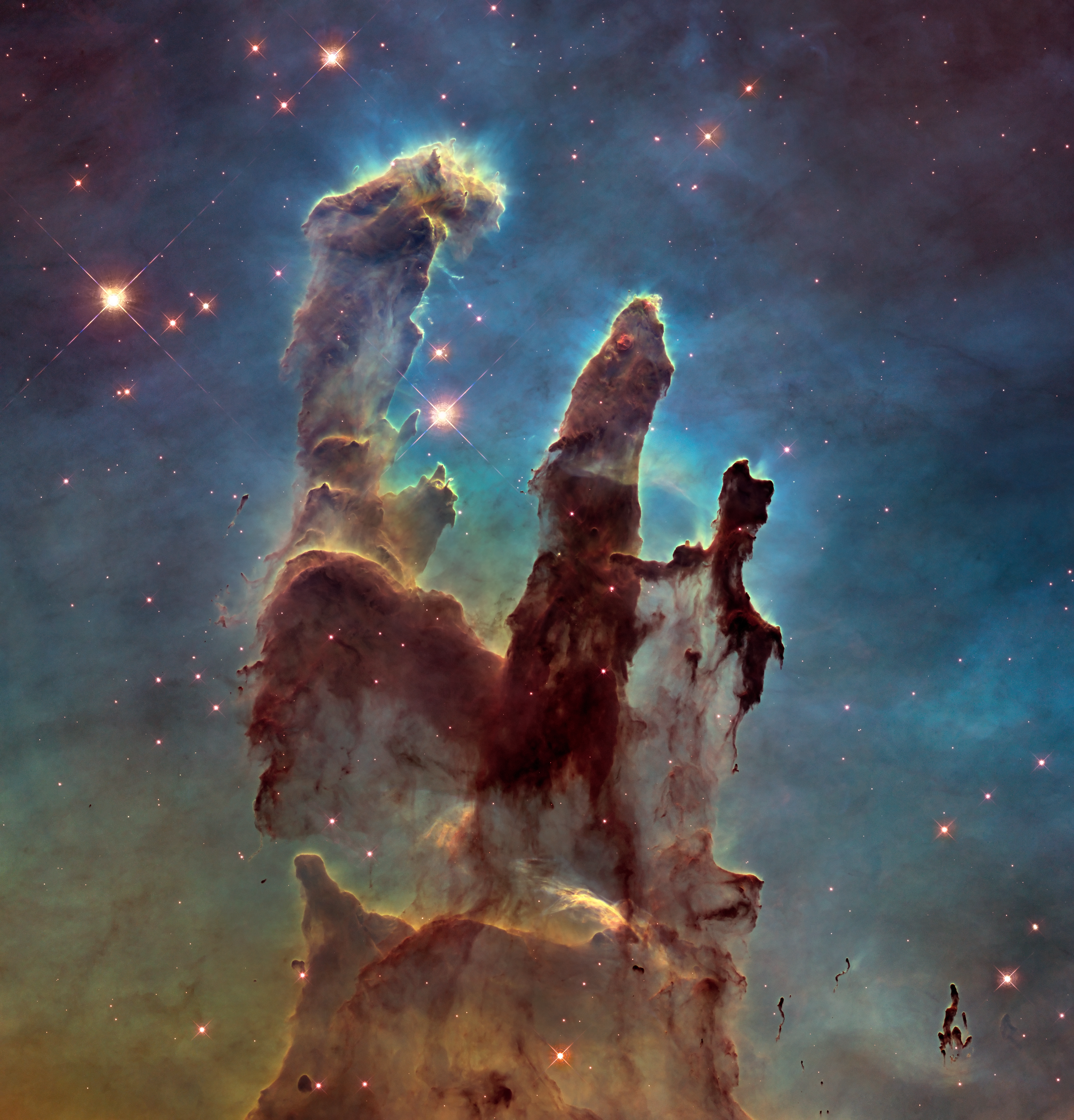=> Zurück zum Artikel
Sterngeburten in einem kosmischen Nebel: woher kommt Materie? Wodurch wurde die erste Bewegung angestoßen? Was ist Leben? Nach du Bois-Reymond sind solche Fragen auf immer unbeantwortbar. © NASA, ESA, and the Hubble Heritage Team (STScI/AURA) ☛
Die Sieben Welträtsel
Bildinfo und Lizenz
Bildinfo
Sterngeburten in einem kosmischen Nebel: woher kommt Materie? Wodurch wurde die erste Bewegung angestoßen? Was ist Leben? Nach du Bois-Reymond sind solche Fragen auf immer unbeantwortbar. NASA's Hubble Space Telescope has revisited the famous Pillars of Creation, originally photographed in 1995, revealing a sharper and wider view of the structures in this visible-light image. Astronomers combined several Hubble exposures to assemble the wider view. The towering pillars are about 5 light-years tall. The dark, finger-like feature at bottom right may be a smaller version of the giant pillars. The new image was taken with Hubble's versatile and sharp-eyed Wide Field Camera 3. The pillars are bathed in the blistering ultraviolet light from a grouping of young, massive stars located off the top of the image. Streamers of gas can be seen bleeding off the pillars as the intense radiation heats and evaporates it into space. Denser regions of the pillars are shadowing material beneath them from the powerful radiation. Stars are being born deep inside the pillars, which are made of cold hydrogen gas laced with dust. The pillars are part of a small region of the Eagle Nebula, a vast star-forming region 6,500 light-years from Earth. The colors in the image highlight emission from several chemical elements. Oxygen emission is blue, sulfur is orange, and hydrogen and nitrogen are green. A number of Herbig-Haro jets lengthened noticeably (see lower panel of linked page) in the nearly 20-year interval between the two Hubble images. Object Names: M16, Eagle Nebula, NGC 6611 Source
Created: October 29th, 2014 Author: NASA, ESA, and the Hubble Heritage Team (STScI/AURA) License
This image is from the NASA Imaga Library. On the website is the following note: NASA content - images, audio, video, and computer files used in the rendition of 3-dimensional models, such as texture maps and polygon data in any format - generally are not copyrighted. You may use this material for educational or informational purposes, including photo collections, textbooks, public exhibits, computer graphical simulations and Internet Web pages. This general permission extends to personal Web pages. [This note was copied from the image gallery site on March 4th, 2020] Warranty
No guarantee can be given as to the correctness of facts implied or explicitly stated. Usage is completey at your own risk. 💣 Originalseite
Das Bild ist Teil eines online-Lexikons. Rhetos Lernlexikon Mathematik, Aachen:  Sterngeburten in einem kosmischen Nebel: woher kommt Materie? Wodurch wurde die erste Bewegung angestoßen? Was ist Leben? Nach du Bois-Reymond sind solche Fragen auf immer unbeantwortbar.
© NASA, ESA, and the Hubble Heritage Team (STScI/AURA) => Zurück zum Artikel
Sterngeburten in einem kosmischen Nebel: woher kommt Materie? Wodurch wurde die erste Bewegung angestoßen? Was ist Leben? Nach du Bois-Reymond sind solche Fragen auf immer unbeantwortbar.
© NASA, ESA, and the Hubble Heritage Team (STScI/AURA) => Zurück zum Artikel
